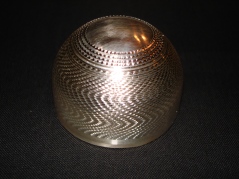G. Phil Poirier, Master
Phil Poirier is a true Master of many trades. He is a world class lapidary as well as goldsmith. He is a teacher, having presented numerous times at the Santa Fe Symposium as well as taught individual workshops all over the world.
A manufacturer of tools that make the jobs of goldsmiths, silversmiths, and metal artists the world over so much easier, he is the owner of Bonny Doon Tools. His broad array of products are available through Rio Grande Jewelers Supply in Albuquerque, New Mexico. Though I am not affiliated with either company in any way, I do consider myself among the many happy customers whose elbows and ligaments are less sore and tired through the use of the ingenious tools and accessories Phil has developed. His knowledge of CAD and CNC is broad and deep and allows him to realize the creation of such marvels, among many, as synclastic and anti-clastic bracelet and ring formers that move metal as if it were clay and make production easier for creators everywhere.
What I didn’t know until a couple of years ago is that for over 20 years Phil has been restoring, repairing, and collecting engine turning equipment as well as become master in the art of its practice. He is also an accomplished ornamental wood turner. Last year, he presented an excellent paper on titled, “Art, History and Processes of Guilloché Engraving” at the Santa Fe Symposium. This article is available and free to download from the web link above.
This year, Phil’s presentation, his fourth, at the Santa Fe Symposium will be titled, “Implementing the Processes of a Rose Engine in the Modern Shop” and will cover a broad range of topics and include more information on engine turning/guilloché. It is still possible to register and attend this event as of this posting through the links included herein.
In order to see this Master in action, please have a look this well executed video, “For the Love of Jewelers”:
























